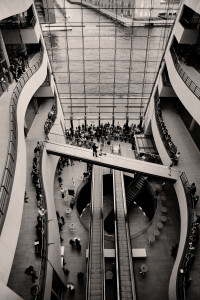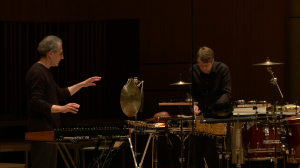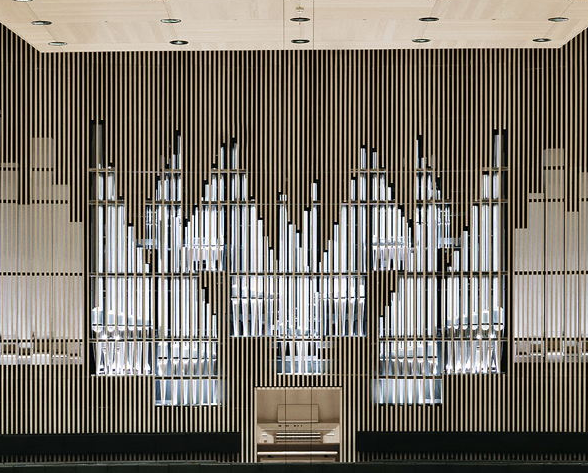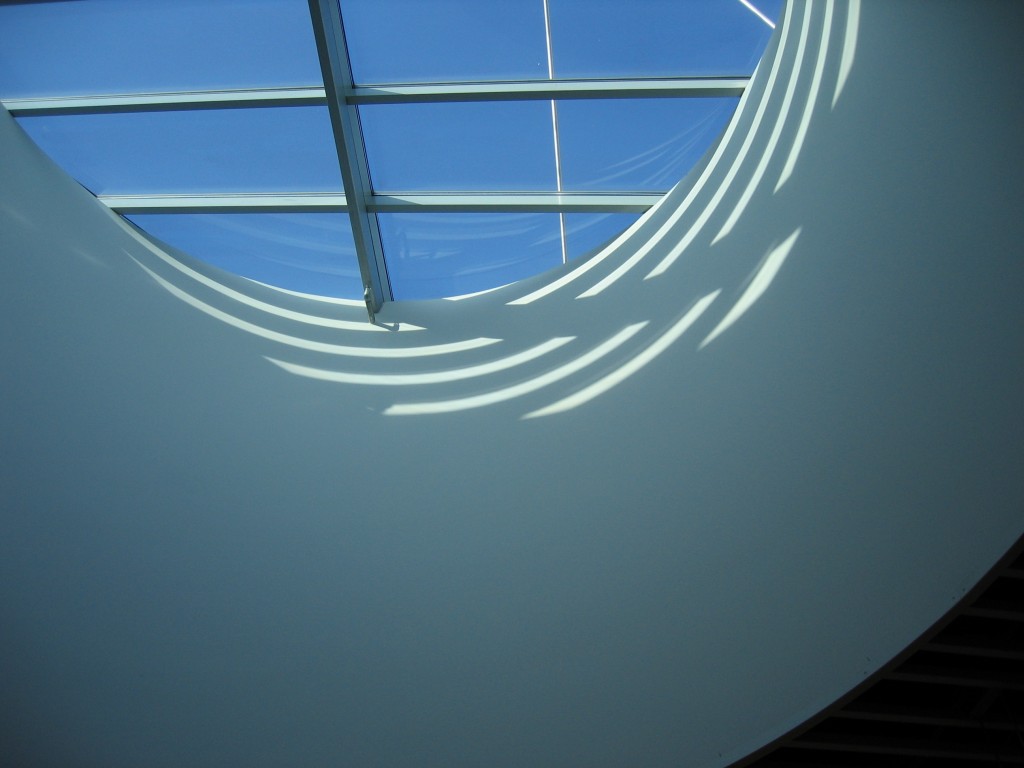
Conducting Sound in Space (2015-2016)
Conducting Sound in Space explores the potential of electronic music that combines production, performance and diffusion into a single integrated creative process. The idea developed from the Wayne Siegel’s previous use of motion-tracking technology in his own artistic practice as a composer and performer. Various motion tracking systems were considered, experiments were conducted with three sound diffusion setups at three venues and a new composition for solo performer and motion-tracking system took form.
Trio for percussion, motion-tracking system and robot-controlled pipe organ (2014-2015)
Trio for percussion, motion-tracking performance system and robot-controlled pipe organ combines gestural control of electronic sounds in space and generative music for pipe organ. Although there are some through-composed sections, much of the work is improvised. The organ part is played directly by a computer programmed to compose organ music in real time, a sort of composing/improvising robot. The human performers are free to react to each other and to the robot performer.
Trio was premiered on May 9, 2015 at the Aarhus Symphony Hall in connection with the annual SPOR Festival. The work and this performance were supported by the Royal Academy of Music in Aarhus as part of the academy’s artistic research program.
Everyone Talks about the Weather (2012-2013)
Everyone Talks about the Weather is a 12-hour work for robot-controlled pipe organ and weather satellite. The pipe organ is played by a computer program that composes organ music with endless variation. Data from a weather satellite is used to control the composition.
The Sound Gallery is a series of site-specific sound installations designed for Bruuns Galleri: one of Denmark’s largest and busiest shopping malls located in the civic center of Aarhus.
Drowning/Burning is an adaptive sound installation designed for a public space such as a museum. Adaptive music is computer-generated music that can be controlled, advertently or inadvertently, by a listener or audience. The installation consists of a small stage that visitors can stand on, either alone or in small groups.
The Pandora Project (2007-2009)
The Pandora Project was started in 2008 as a continuation of previous work we have done with interactive dance. The project involves experimenting with current motion-tracking technology for interactive dance. Several software composition environments were created, and experiments were made in collaboration between composer Wayne Siegel, choreographer Brolin-Tani and several dancers using two different hardware systems.
This project was a collaboration with visual artist Jette Gejl and computer scientist Peter Moeller Nielsen. 3-D animation was combined with 3-D sound.
Adaptive Music on the Web (2004-2007)
The project Adaptive Music on the Web was initiated by DIEM in 2004. The goal of the project was to develop new musical paradigms that allow the listener to influence and alter a piece of music while listening within the context of a common web browser. A web site was set up for presenting these works.
The Digital Dance Project (1996-1999)
The Digital Dance Project was a research project conducted at DIEM. The goal of the project was to create a computer music composition that allows a dancer to directly influence musical processes. A wireless dance interface, the DIEM Digital Dance System, was designed and built. Several seminars, compositions, performances and colloborative projects as well as an article in the Computer Music Journal have resulted.









